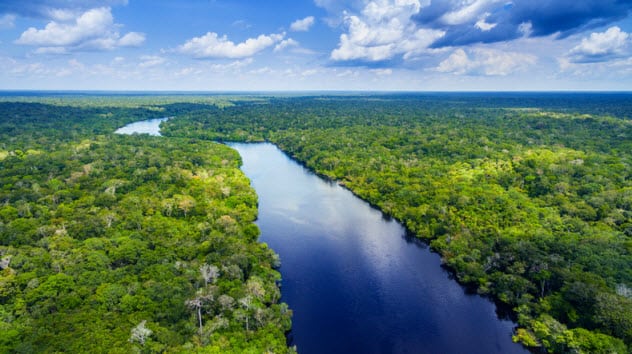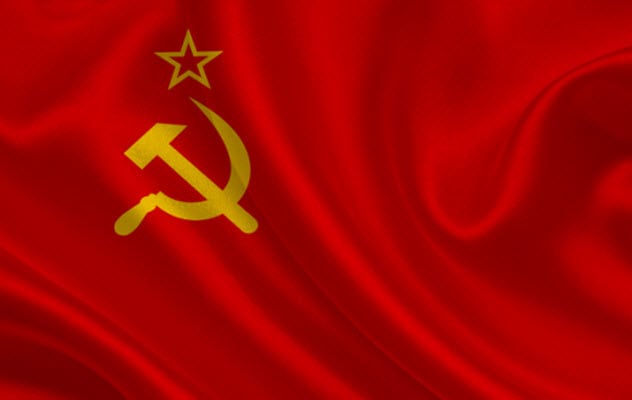To create a new TLD, ICANN requires that a business or organization bid for the creation of the TLD. This bid can be countered by another business, organization, or even a country for any reason. However, if the applicant gets the bid, it then decides whether to keep the TLD for personal use or release it to the general public. If it chooses the latter, it is expected to release the TLD in three stages: sunrise, land rush, and general availability. The sunrise stage allows trademark owners to register the names of their brands and businesses if they so desire. The land rush allows anyone to register any name, even if they do not have a trademark on it. The general availability stage is when every other domain name not registered during the first two stages is opened for all.
10 .xxx, .porn, and .adult
ICANN released the .xxx TLD in 2011. The idea was to let pornography sites have their own domain extension so that they would be easily recognizable. The release caused hysteria among non-pornography businesses and US colleges, and many quickly registered .xxx domain names that could be associated with them before mischievous porn directors started getting ideas. Pepsi, Nike, and Target registered Pepsi.xxx, Nike.xxx, and Target.xxx. Google also registered Google.xxx, YouTube.xxx, Blogspot.xxx, and Picasa.xxx. The Vatican never bothered registering its name, so someone else registered Vatican.xxx the moment the domain was open to the general public. US colleges were worse off because they needed to register several names. The University of Kansas spent almost $3,000 buying dozens of .xxx domain names, including KUgirls.xxx and KUnurses.xxx. Some universities needed to buy so many names to protect themselves that they did not even bother to do so. Rather, they prefer to be on the lookout and slap lawsuits on porn directors who register names that could be associated with them.[1] Away from .xxx domains, .porn and .adult domains also caused their fair share of controversies. Several brands and colleges—including Harvard University, Microsoft, and Taylor Swift—quickly grabbed their .porn and .adult domains before someone else did. Microsoft alone registered Microsoft.adult, Microsoft.porn, Office.porn, and Office.adult.
9 .catholic
ICANN is still considering the creation of the .catholic TLD. The Vatican is at the forefront of the creation of the domain and has even paid the $185,000 fee required to bid for its creation. If the Vatican is successful, it will own the TLD and have the authority to decide who can register a .catholic domain name. The Vatican’s main opposition came from Saudi Arabia, which opposes the creation of any TLD containing religious terms, even if it is pro-Islamic. For instance, Saudi Arabia opposes the creation of TLDs like .islam, .halal, and .ummah. According to the Islamic nation–turned–freedom fighter, the Vatican cannot own the .catholic TLD because it would be unfair to the Eastern Orthodox Church and the Oriental Orthodox Church, whose members also identify themselves as Catholics.[2] Besides religious terms, Saudi Arabia also opposes the creation of TLDs like .gay, .tattoo, .pub, .bar, .pornography, and .baby. US multinational Johnson & Johnson is one of the three businesses bidding to own the .baby TLD. While Johnson & Johnson needs it for its baby business, Saudi Arabia suspects that the other two bidders would use it for pornography.
8 .gay and .lgbt
As we mentioned earlier, Saudi Arabia opposes the creation of the .gay TLD. The Saudis say the domain would be offensive to cultures and religions that do not support homosexuality. Their opposition got the attention of some gay groups and movements like The Lesbian and Gay Foundation, which clarified that the TLD would only be used to offer support to gays and not to promote homosexuality.[3] The .lgbt TLD has also caused controversy. Unlike the .gay TLD, .lgbt has already been created and is under the control of domain registrar Afilias. According to Afilias, businesses can register .lgbt domains to show they are LGBT-friendly. However, the International Gay and Lesbian Travel Association says that .lgbt domains are likely to cause more harm than good because anti-LGBT groups could pretend to be pro-LGBT just to buy the names. The group prefers that gays, lesbians, bisexuals, and transgenders just focus on the .gay TLD.
7 .patagonia
Patagonia, Inc., a US retailer of outdoor clothing and gear, came under fire from the governments of Argentina and Chile after the company started a bid for the .patagonia TLD. Apparently, Patagonia is also the name of a region in Chile and Argentina. Under ICANN rules, no one can bid for the name of a geographical area if it appears on the ISO 3166 list. As described by the International Organization for Standardization (ISO), the ISO 3166 list contains the international code of every country and state in the world. Internationally, countries and states are identified by their codes on this list and not by their names because country and state names may cause confusion when different languages are used. Patagonia does not appear on the ISO 3166 list, which means that Patagonia, Inc. could legally register the .patagonia TLD. However, Patagonia, Inc. withdrew its bid when it became obvious that ICANN was unlikely to create the controversial TLD.[4]
6 .amazon
5 .sucks
The .sucks TLD is one of the most controversial, and it is not hard to see why. Having .sucks at the end of the name of a popular brand could allow angry customers or mischief-makers to destroy the reputation of that brand. Businesses generally like buying the names of their brands on any new TLD. They attempted to do so with .sucks until Canadian company Vox Populi Registry Ltd., which controls the TLD, charged them a $2,499 fee. Some registrars selling the domain on behalf of Vox Populi charged as much as $4,000. This is way above the $250–$300 that other registrars often charged brand owners to register their domains before the TLD became open to the general public. After facing severe criticism from angry businesses, ICANN asked the US Federal Trade Commission and the Office of Consumer Affairs in Canada to look into Vox Populi’s actions. Meanwhile, the likes of Apple, Google, Taylor Swift, and Oprah did not wait for the outcome and quietly bought their .sucks domain names.
4 .africa
.africa is the TLD for Africa. It was proposed in 2011 and became a source of heated controversy and a lawsuit involving two registries, DotConnectAfrica of Kenya and ZA Central Registry (ZACR) of South Africa. Both applied for control of the TLD in 2012. ICANN required either registry to have the support of 60 percent of the African governments and the approval of the African Union to claim the domain. Surprisingly, both registries claimed to have the support of the African Union. It later became clear that the African Union originally backed DotConnectAfrica but later reversed its decision to back ZACR. ICANN agreed to give the TLD to ZACR in 2014, but DotConnectAfrica was not giving up without a fight. It took legal action and requested that a California court stop ICANN from approving the TLD for ZACR. The court ruled that ICANN could approve the TLD for ZACR.[7]
3 .corp, .home, and .mail
.corp, .home, and .mail are three domains we will not have anytime soon. In 2012, 20 businesses paid ICANN $185,000 each to bid for the TLDs. However, as ICANN soon found out, the three TLDs are usually used for intranets and DNS testing.[8] If they are ever approved, browsers could unwittingly access private networks. This is a serious security risk that could be exploited by criminals or mischief-makers who just want to play pranks. After six years of consultations, ICANN indefinitely suspended the creation of the TLDs and issued full refunds to all 20 businesses that bid for them.
2 .su
.su used to be the TLD of the Soviet Union. It was issued to the USSR in 1990, a year before the Soviet Union collapsed and splintered into several states. The TLD was supposed to collapse with the Soviet Union in the same way that .yu went away with the division of Yugoslavia and .dd of East Germany disappeared with the unification of Germany. However, .su remained. Today, it has become a hotbed for hackers and criminals who use .su sites to commit cybercrimes that have been compared to daylight robberies. Due to lax laws, these cybercriminals control bots, send spam, rob banks, and launch DDoS and ransomware attacks right under the glare of everyone—and no one can do anything. More criminals have been opening .su sites since 2011 when Russia tightened its policy on .ru domains. This has left half of all Russian criminal sites using .su domains. One option was to shut down the entire .su TLD, but that is impossible. Despite the proliferation of cybercriminals, the .su TLD contains over 120,000 sites, many of which are used for legal purposes.[9]
1 .bible
ICANN issued the .bible TLD to the American Bible Society (ABS) in 2016. Today, the society is being accused of limiting others’ freedom of religion with the stringent control it imposes over the domain. First, it determines who can have a .bible domain name. Even for those it approves, ABS has guidelines detailing what type of content they can post. Although some guidelines are understandable—like forbidding the creation of content that demeans God and the Bible—ABS has some controversial rules, too. At one time, it forbade domain name owners from creating content that supported beliefs that were non-Christian or did not conform to the New Testament. After some Jewish scholars protested, ABS backtracked and rephrased the rule to forbid posts that did not conform to the ideologies of Jews and Orthodox Christians. ABS created another controversy after it required panelists who wanted to arbitrate disputes relating to .bible domain names to swear that they supported ABS’s mission and believed that the Bible is the Word of God.[10]
























